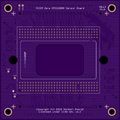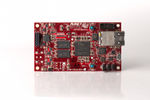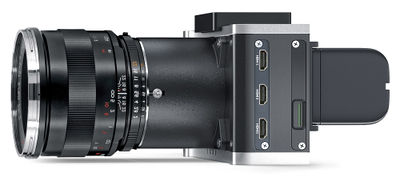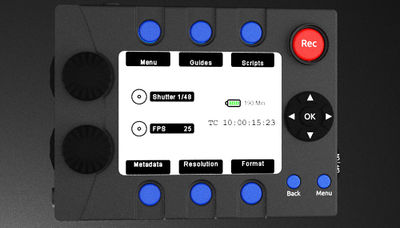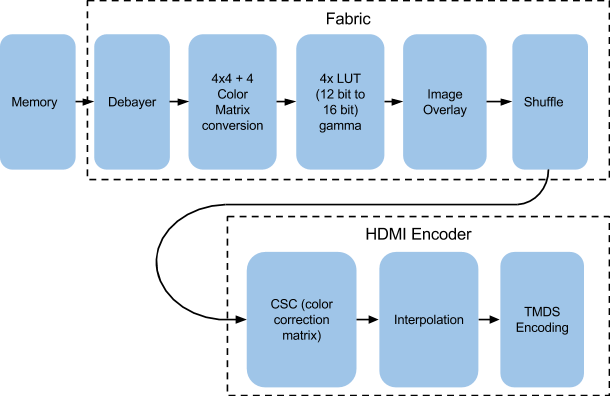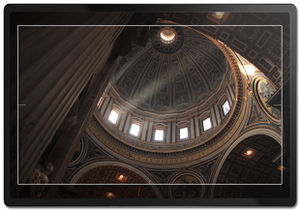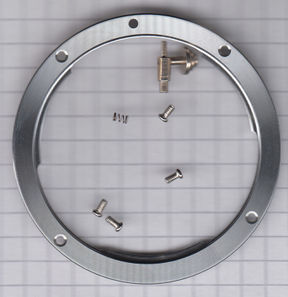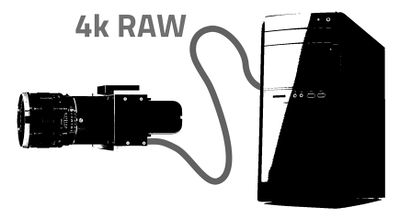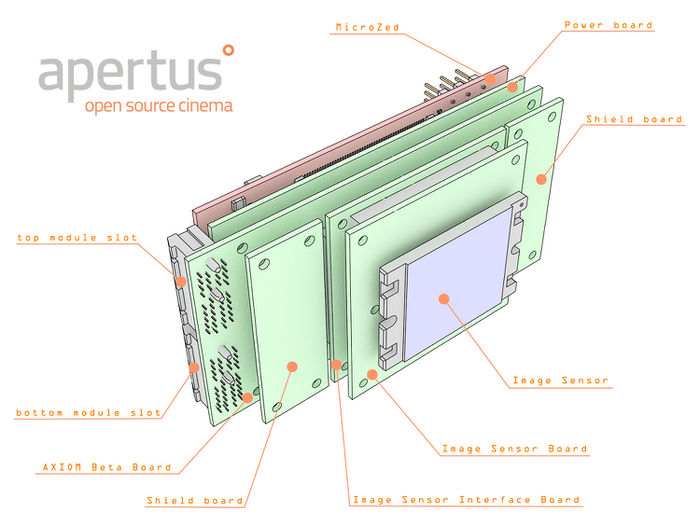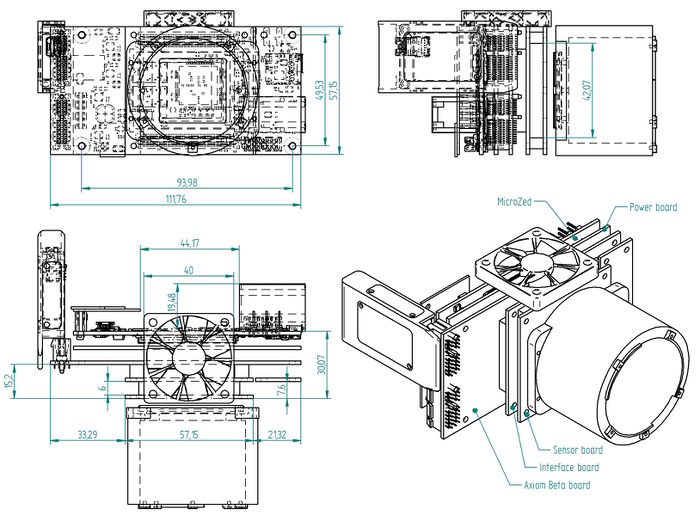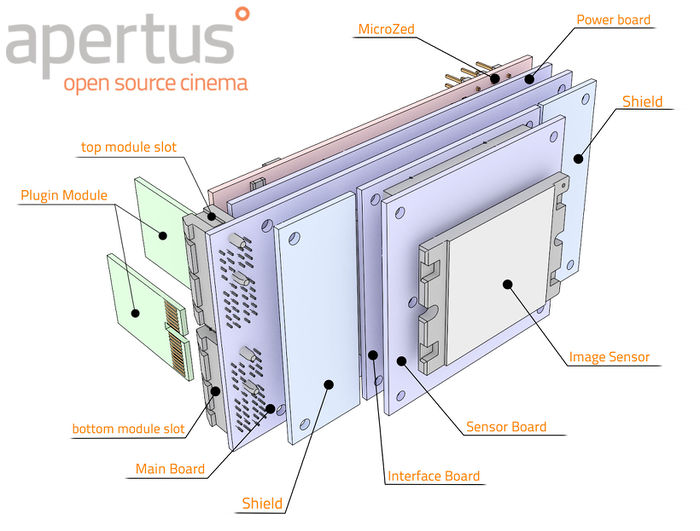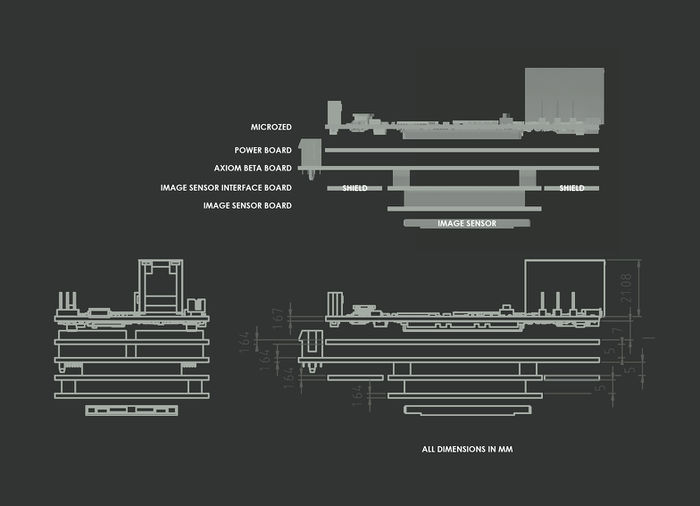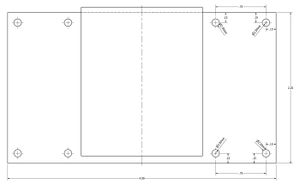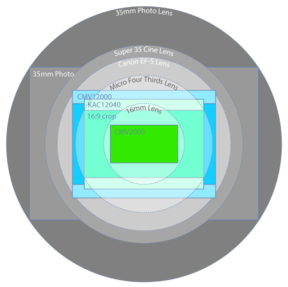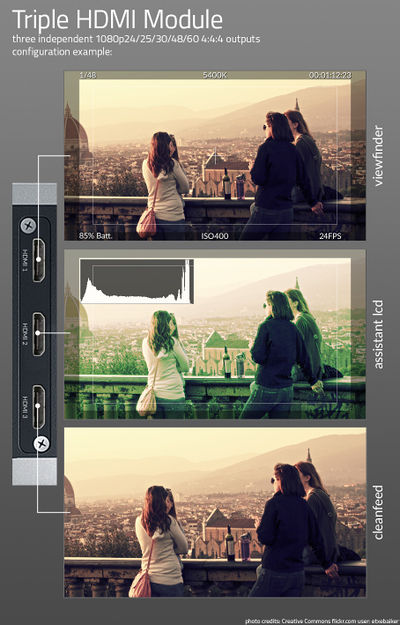AXIOM Beta
1 Printed Circuit Boards
Validation Guide:
PCB Component Footprint Validation Procedure
Boards:
The Beta uses a Microzed:
2 AXIOM Beta Topics
2.1 Active Battery Mount
Battery mount for NP-F970/F750/F550 batteries to power the AXIOM Beta. Includes power usage and capacity monitoring to estimate remaining charge and time remaining.
More Thoughts on Power.
2.1.1 InfoLithium Protocol
Proprietary protocol from Sony that exchanges metadata between batteries and devices. Expected data inside the protocol includes: charge cycles, battery ID, remaining total capacity, remaining current capacity, etc. Only official Sony batteries incorporate this protocol, cheap replacement parts don't and some Pro Sony cameras refuse operation with batteries without InfoLithium communication. Decrypting this protocol could give us more insight into the battery but is not essential as we can measure the discharge curve and estimate remaining capacity rather accurately that way.
2.1.1.1 Hacking References
http://randybuildsthings.wordpress.com/2013/02/25/sony-infolithium-m-teardown/
http://www.dpreview.com/forums/post/4296759
2.2 Dictator Remote Controller
2.3 Image Processing Pipeline
Draft pipeline taken from AXIOM Alpha for now.
Image Acquisition Pipeline:
HDMI Image Processing Pipeline:
2.3.1 Image Processing Nodes
2.3.1.1 Debayering
A planned feature is to generate this FPGA code block with "dynamic reconfiguration" meaning that the actual debayering algorithm can be replaced at any time by loading a new FPGA binary block at run-time. This tries to simplify creating custom debayering algorithms with a script like programming language that can be translated to FPGA code and loaded into the FPGA dynamically for testing.
2.3.1.2 Image Overlays
Full HD framebuffer that can be altered from the Linux userspace and is automatically "mixed" with the real time video from the image sensor. (https://www.apertus.org/pong-project on the AXIOM Alpha was implemented exactly with this method)
We still need to decide if a color palette here is sufficient or how many colors we would need. 32 bit image with Alpha channel might be an unnecessary overkill here.
This feature could also be used to draw live histograms/scopes.
2.3.1.3 Peaking
Peaking marks high image frequency areas with colored dot overlays. These marked areas are typically the ones "in-focus" currently so this is a handy tool to see where the focus lies with screens that have lower resolution than the camera is capturing.
Handy Custom Parameters:
- color
- frequency threshold
Potential Problems:
- there are sharper and softer lenses so the threshold depends on the glass currently used. For a sharp lens the peaking could show areas as "in-focus" if they actually aren't and for softer lenses the peaking might never show up at all because the threshold is never reached
2.3.1.4 Image Blow Up / Zoom
Digital zoom into the center area of the image to check focus.
As extra feature this zoomed area could be moved around the full sensor area.
This feature is also related to the "Look Around" where the viewfinder sees a larger image area than is being output to the clean-feed.
This re-sampling method to scale up/down an image in real-time can be of rather low quality (nearest neighbor/bilinear/etc.) as it is only for preview purposes.
2.3.1.5 Matrix and LUTs
3x3 / 4x4 Matrix
AXIOM Alpha uses one LUT per color channel.
Maybe a 3D LUT (17×17×17) is possible at a later point: http://en.wikipedia.org/wiki/3D_lookup_table
2.4 Lens Mounts
| Mount | Nikon F | Canon EF | Micro Four Thirds | ||
|---|---|---|---|---|---|
| Type | Bayonet | ||||
| Compatible Lenses | Nikkor FX | Nikkor DX | EF | EF-S (optionally) | |
| Image Circle Size | Full Frame ø 43.3 mm |
DX ø 28.4 mm |
Full Frame ø 43.3 mm |
Canon APS-C ø 27.3 mm |
"Half Frame" ø 21.6 mm |
| Throat | 44 mm | 54 mm | ~38 mm | ||
| Flange focal distance | 46.5 mm | 44 mm | 19.25 mm | ||
| Axiom Beta Sensor Compatibility |
16mm Four Thirds Super35 |
16mm Four Thirds | |||
More Details: Lens Mounts
2.4.1 Passive EF Mount
2.4.2 Passive Nikon F-Mount
Measured Bayonet Thickness: 1.3mm
2.4.3 Passive Micro Four Thirds Mount
2.4.4 Active Canon EF Mount
2.5 4K RAW PC recording option
2.6 Enclosure Design
Notes:
Switchable ND Filters not planned currently
Common and widely available peltier elements are 40x40mm (move it closer to fan?)
2.7 Electronics
2.7.1 AXIOM Beta PCB Stack Concept
Version 3:
Version 4:
All dimensions are still not final! Work in progress...
File:PCB Stack Concept V03 02.pdf
2.7.2 Image Sensor Frontend
It is planned to incorporate a glass filter slot between lens mount and lens base for placing an IR-cut-off filter or OLPF with IR-cut-off coating in the light path.
for Truesense KAC12040
Dimensions (inches if not stated otherwise):
2.7.2.1 Image Sensors
| Axiom Beta Model | 16mm | Four Thirds | Super35 |
|---|---|---|---|
| Brand | CMOSIS | ON Semionductor (prev. Truesense/Kodak) |
CMOSIS |
| Model | CMV2000 | KAC12040 | CMV12000 |
| Type | CMOS | ||
| Shutter Type | Pipelined Global Shutter | Global & Rolling Shutter | Pipelined Global Shutter |
| Color filter Array | Bayer (Color model) None (B/W model) | ||
| IR filter | no | ||
| Anti-Aliasing Filter (OLPF) | no | ||
| Size | 10.6 mm × 5.94 mm ø 12.1 mm |
18.8 mm × 14.1 mm ø 23.5 mm |
22.5 mm × 16.9 mm ø 28.2 mm |
| Crop Factor | Full Frame ∕ 3.56 16mm Film ∕ 1.05 |
Full Frame ∕ 1.84 Four Thirds ∕ 0.96 |
Full Frame ∕ 1.54 Super35 ∕ 1.10 |
| Aspect Ratio | 16:9 | 4:3 | 4:3 |
| Pixel Resolution (h × v) | 1920 × 1080 | 4000 × 3000 | 4096 × 3072 |
| Pixel Size | 5.5 µm | 4.7 µm | 5.5 µm |
| Dynamic Range | 10 stops 15 stops (HDR mode) |
9.3 stops (Gobal Shutter) 12 stops (Rolling Shutter) |
10 stops 15 stops (HDR mode) |
| Sensitivity | 200 ISO | ~ 400 - 1250 ISO | |
| Max Frame Rate @ Bit Depth | 340 fps @ 10 bit 70 fps @ 12 bit |
110 fps @ 8 bit 70 fps @ 10 bit 30 fps @ 12 bit 10 fps @ 14 bit |
300 fps @ 10 bit 180 fps @ 12 bit |
| More info | |||
2.7.3 Shields
The Axiom has 2 medium speed IO interfaces to be used with "shields".
- One 200Mbit/s shield interface
- One 1Gbit/s shield interface
- Not hot pluggable
2.7.3.1 Triple HDMI Output Shield
Each port can deliver an independent 1080p60 4:4:4 stream with a different set of image processing nodes applied. Typically there will be one complete image processing pipeline and the three HDMI ports will output the real time image data from specific points in that processing pipeline.
2.7.3.2 Dual Micro SD Shield
This module adds two micro SD card slots to the AXIOM Beta. The active slot can be switched via the card driver and both cards share a 50MByte/s interface to the Zynq.
The bandwidth is not sufficient for video recording but more than enough for storing full resolution 4K raw still images.
The external slots can not be used for initial booting of the camera.
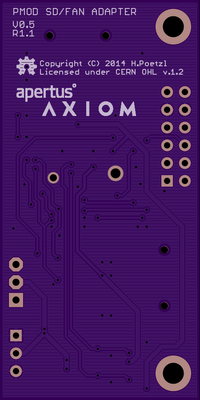
|
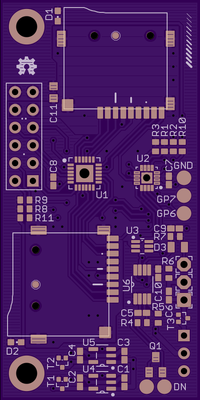
|
| PCB Top | PCB Bottom |
2.7.4 Modules
There are also 2 high speed IO interfaces where "modules" can be hot plugged
- 6.2Gbit/s each:
- 6 ✕ 950Mbit/s
- 500MBit/s GPIO
- Two modules can be combined in one 12.4 Gbit/s double height module
- Hot pluggable
- PCIe connector (not using PCIe signaling)
2.8 Beta Naming Scheme
Versions of the AXIOM Beta will be named AXIOM Beta plus the according roman number.
eg. AXIOM Beta I - Developer Edition
